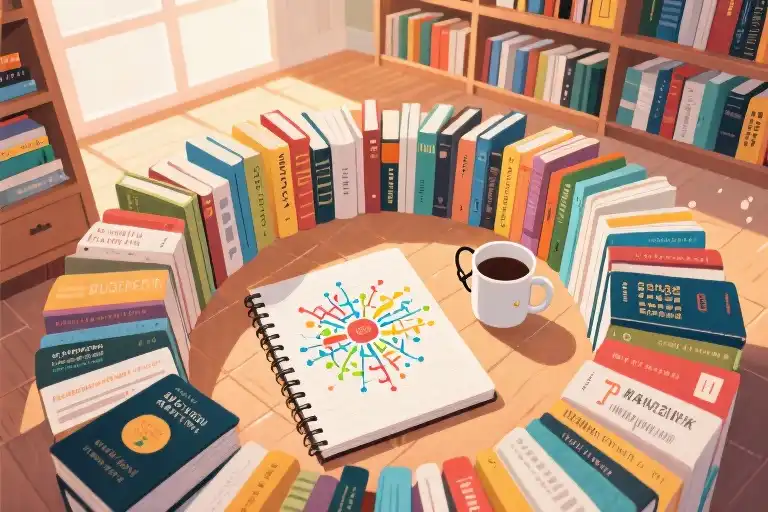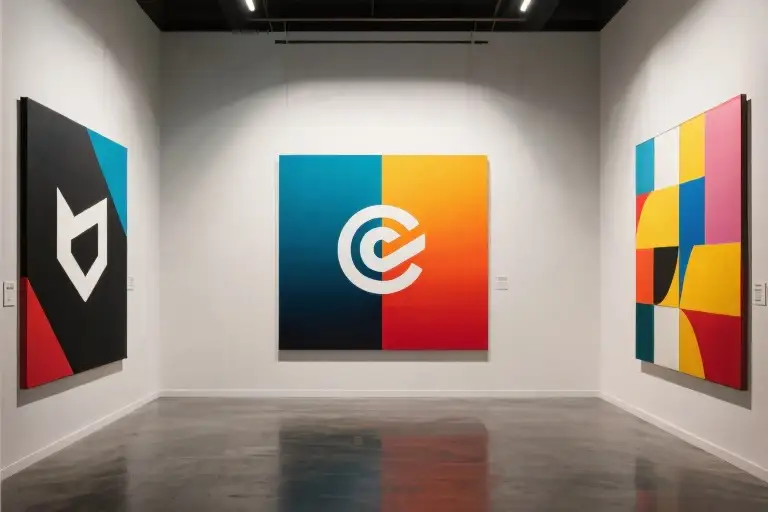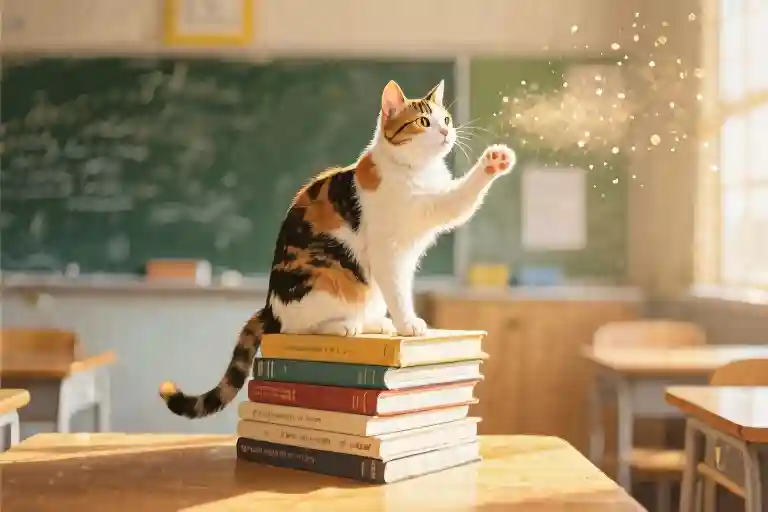The email arrived on a Tuesday morning, the subject line simple yet heavy: “Thinking of Selling My Guitars.” A musician reader confessed he’d written over thirty lyrics for an album, only to scrap nearly all of them. One piece made it onto a friend’s record, but instead of pride, he found himself trapped in endless revisions—each listen revealing new flaws only he could hear. His message carried that particular ache familiar to anyone who’s created something and then hated it.
What struck me wasn’t just his struggle, but how precisely he articulated the creative paradox: the better you become, the more flaws you see. He described staring at his guitar case, wondering if he should quit altogether—not for lack of passion, but because his own standards had become impossible to meet. That moment when the instrument symbolizes not possibility, but perpetual disappointment.
Creative work often feels like this: building sandcastles at low tide, watching each wave of self-doubt erase what you’ve made. The songwriter’s dilemma mirrors what painters whisper about canvases, what writers mutter over drafts—that peculiar agony where your taste outpaces your skill. Psychologists call it the Dunning-Kruger effect, but artists know it simply as Tuesday.
His words lingered because they were so ordinary. Not every creative crisis involves dramatic breakdowns or burning manuscripts. Sometimes it’s just a man in a quiet room, running his fingers along guitar strings he no longer believes in, wondering why making art hurts this much when it’s supposed to set you free.
The Curse of the Creative Mind
That email about the guitarist considering selling his instruments stuck with me for days. There’s something profoundly relatable about a creator drowning in their own self-doubt. The thirty discarded lyrics, the single released track that only brings regret – these aren’t just one musician’s struggles. They’re the universal growing pains of anyone who’s ever tried to make something meaningful.
Studies from the Journal of Creative Behavior show nearly 80% of artists report persistent dissatisfaction with their work. Novelists rewrite opening chapters dozens of times. Painters scrape off half-finished canvases. Photographers delete more shots than they keep. This compulsive self-criticism isn’t limited to amateurs either – Joni Mitchell once described listening to her own albums as ‘hearing all the ghosts of failed possibilities.’
What’s fascinating is how this creative anxiety manifests differently across disciplines. Writers obsess over sentences that readers will likely skim. Designers fixate on pixel-perfect alignments invisible to the naked eye. Musicians hear phantom imperfections in recordings. The common thread? A hypersensitivity to flaws that others might never notice.
This phenomenon has roots in how creative minds develop. As skills improve, so does the ability to recognize quality – often outpacing one’s current capabilities. It’s like developing a gourmet palate while still learning to cook. You can taste when something’s off, even if you can’t yet fix it. That gap between taste and skill creates the perfect storm for self-doubt.
Yet there’s an uncomfortable truth here. The same sensitivity that makes creators hate their work is what allows them to make great work. That internal critic, when properly calibrated, serves as the quality control mechanism pushing artists forward. The problem arises when the volume gets turned up too high, when the critical voice shifts from constructive to destructive.
Creative work exists in this strange space where nothing ever feels truly finished, only abandoned. The songwriter could always tweak that bridge. The novelist could always refine that character arc. At some point, you have to walk away – not because the work is perfect, but because it’s reached a threshold of ‘good enough for now.’ Understanding this distinction separates thriving creators from those who quit.
Perhaps what we’re really seeing isn’t a curse, but the natural friction of growth. Those thirty discarded lyrics weren’t failures – they were the necessary stepping stones to the one that got released. The dissatisfaction isn’t a bug in the creative process; it’s the feature that drives improvement. The trick lies in learning to hear that critical voice without letting it silence you altogether.
The Dunning-Kruger Mirror
That guitar collecting dust in the corner isn’t just an instrument – it’s a mirror reflecting every creative person’s silent struggle. The same cognitive forces that make beginners overestimate their skills conspire to make experienced creators underestimate theirs.
Dunning-Kruger effect works like bad Wi-Fi signal: when your connection to reality gets spotty, you either think you’re Picasso after one painting lesson or convince yourself your decade of songwriting experience means nothing. For creators, this manifests as a cruel paradox – the better you become, the more flaws you see in your work. Your technical skills finally catch up to your taste, only for that very taste to turn against you.
Consider how musicians develop: A beginner writes three chords and thinks it’s a masterpiece. Two years later, that same person cringes at anything less than jazz-level complexity. The songs didn’t get worse – the creator’s perception shifted. This explains why many artists hate their older work while audiences still love it. Your growing expertise becomes both your superpower and your kryptonite.
Creative work exists in this psychological twilight zone where two versions of yourself constantly argue: The enthusiast who first fell in love with making things, and the critic who’s developed an increasingly refined (some might say ruthless) standard. Most creators don’t realize this internal conflict follows predictable psychological patterns.
Here’s the uncomfortable truth no one tells you about creative growth: Your ability to spot problems in your work will always outpace your ability to fix them. That gap? That’s where self-doubt lives. The very skills that make your art better also make you more aware of how far it could still go. This explains why so many creators hit what they think is a quality ceiling – when in reality, they’re just seeing their work more clearly than ever before.
The solution isn’t to lower your standards, but to understand this mental machinery. When you recognize that harsh self-assessment often signals growth rather than failure, you can separate productive criticism from paralyzing perfectionism. Your inner critic isn’t wrong – it’s just speaking with the vocabulary of who you’ll become tomorrow, judging the work you made yesterday.
The Two Versions of Creators
The email about selling guitars lingers in my mind. That musician represents one archetype we all recognize – the creator paralyzed by their own standards. He wrote thirty songs and scrapped them all. The one piece that saw daylight only brought regret about how he ‘could’ve done it better.’ This isn’t just artistic temperament; it’s a fundamental crossroads every creative person faces.
Consider two paths diverging in the creative woods. On the left stands Musician A, who’s been perfecting the same album for five years. His SoundCloud shows three meticulously produced singles, each removed after six months when they no longer met his evolving standards. His guitar case collects dust while he waits for divine inspiration to deliver flawless lyrics. ‘It’s not ready,’ he tells friends at every gathering. The irony? His 2018 demos – which he now considers embarrassing – contained the raw energy that first made people say ‘you should record that.’
Then there’s Songwriter B, who releases something every season. Her Bandcamp page documents the journey: awkward phrasing in the winter EP, clumsy metaphors in the spring collection, but also unexpected moments of brilliance that emerged because she shipped the work. Fans watch her style evolve in real time. That shaky live recording from last year? It caught the attention of a producer who loved its imperfections. The track they collaborated on became her most streamed song to date – precisely because it retained some unpolished edges.
Psychologists call this difference ‘tolerance for ambiguity’ – the capacity to sit with unfinished, imperfect creations without spiraling into critique. Studies of professional artists show the most prolific aren’t those with supreme confidence, but those who’ve made peace with the discomfort of showing incomplete work. They understand something vital: creativity isn’t about manufacturing masterpieces, but maintaining motion. Each released piece, however flawed, becomes a stepping stone visible only after you’ve left it behind.
This explains why Musician A’s guitar collects dust while Songwriter B’s strings need monthly replacement. One sees creativity as a destination requiring perfect directions; the other treats it as a hike where wrong turns reveal unexpected vistas. Both experience self-doubt – the difference lies in what they do when it whispers ‘this isn’t good enough.’ One obeys, the other acknowledges the fear and creates anyway.
That email writer staring at his guitars? He’s both these people at once. We all are. The choice isn’t between doubt and confidence, but between letting uncertainty paralyze you or using it as fuel. Every creator’s path forks endlessly at these small moments: save the draft or send it, retake the photo or post it, shelve the guitar or play through the rust.
The Imperfectionist’s Guide to Creating
That guitarist’s story lingers with me – thirty lyrics written, most discarded, one released but still picked apart in his mind. It’s a familiar ache for anyone who’s created anything. The gap between what we imagine and what we actually produce can feel like a personal failure rather than what it truly is: the universal condition of making art.
Here’s what I’ve learned about navigating that gap without abandoning your craft. Three simple questions can help separate healthy refinement from paralyzing self-criticism:
1. Would I judge another creator this harshly?
We extend grace to others that we deny ourselves. Imagine your best friend wrote those lyrics or painted that canvas. You’d likely notice the raw emotion before the imperfect rhymes. Creative work exists on a spectrum – very little is objectively ‘bad,’ most is simply ‘not to personal taste.’ Your taste will always outpace your current ability. That’s not failure, that’s growth.
2. Do five more revisions actually improve this?
Perfectionism often disguises itself as professionalism. There comes a point where tweaking stops refining and starts eroding. The magic of spontaneous creation gets sanded away. Some of history’s most beloved works contain ‘flaws’ – the slightly rushed brushstroke in Van Gogh’s stars, the raw vocal crack in Joni Mitchell’s recordings. These weren’t mistakes the artists missed; they were moments where creation triumphed over calculation.
3. What might this work teach me if released?
Unfinished projects teach us nothing. That song your guitarist friend released despite reservations? However he feels about it now, its existence created possibilities – connections with listeners, invitations to collaborate, concrete feedback rather than imagined criticisms. Published work becomes part of your creative lineage, reference points for what to repeat or evolve next time. Perfectionism keeps your art hypothetical; completion makes it real.
This isn’t about lowering standards. It’s about recognizing that standards applied too early in the process suffocate potential. The first draft isn’t the final statement – it’s the raw material from which better work emerges. That guitarist’s thirty discarded lyrics weren’t failures; they were thirty steps toward understanding what his album needed to be.
Next time self-doubt creeps in, try this: set a timer for two minutes and list everything right with your work before fixating on what’s wrong. You might find the balance shifts. The goal isn’t to stop questioning your work – that critical eye is what makes you grow – but to question your questioning. Is this critique moving me forward or keeping me stuck?
That battered guitar shouldn’t be sold. It should be played – loudly, imperfectly, joyfully.
“If This Were Someone Else’s Work, Would I Be This Harsh?”
That question hit me like a misplaced guitar chord when I first considered it. We creators have this peculiar double standard – boundless generosity when evaluating others’ art, yet merciless scrutiny when facing our own.
Remember the songwriter from the opening story? He’d written thirty lyrics for an album only to discard most. But here’s what struck me: if those same lyrics had appeared in a friend’s notebook, he might have praised their raw honesty or clever turns of phrase. The distance between creator and creation warps our perception in ways we rarely acknowledge.
This cognitive distortion has roots in what psychologists call the ’empathy gap.’ When assessing others’ work, we operate from curiosity and compassion. With our own creations, we’re burdened by memory – every discarded version, every hesitation, every moment of frustration lives in our muscles and haunts our judgment. The song you wrote isn’t just the final product; it carries the ghost of all its possible iterations.
I’ve noticed three telltale signs that our self-criticism has crossed from healthy refinement into destructive territory:
- The Comparison Trap: Measuring your draft against others’ polished final products (that you didn’t witness being revised fifteen times)
- The Timeline Illusion: Forgetting that most great works evolved through stages, judging your version 1.0 against someone’s version 5.0
- The Context Blindspot: Ignoring that listeners/readers experience the work fresh, without your mental baggage
Try this experiment next time you’re tempted to scrap a creation: Imagine discovering it anonymously online. Would you still dismiss it so quickly? Often, we’re not rejecting the work itself, but our complicated relationship with the process of making it.
There’s wisdom in that old studio adage: ‘Sometimes you need to finish the song to understand what the song wanted to be.’ Perfectionism in creativity isn’t about high standards – it’s often fear disguised as quality control. The songs we abandon teach us as much as the ones we release, maybe more. They’re not failures; they’re the necessary friction that lets the good stuff eventually slide through.
So before you sell those guitars or delete those drafts, ask yourself one more question: If this were left on my doorstep by a stranger, would I hear its potential? Your answer might surprise you.
The 5% Rule: When Good Enough Is Actually Great
That question from the songwriter lingers in the air like the last chord of an unfinished song – “Would ten more revisions even make it 5% better?” We’ve all been there, hunched over our creations like overprotective parents, convinced that with just one more tweak, one more brushstroke, one more rewrite, we’ll finally birth perfection.
But here’s the uncomfortable truth most creative people learn the hard way: beyond a certain point, our obsessive polishing becomes less about improving the work and more about soothing our own anxieties. The cognitive bias at play here isn’t just Dunning-Kruger – it’s what psychologists call diminishing marginal returns on creative effort. Those final rounds of edits where we agonize over comma placement or synth tones? They’re often about control, not quality.
Consider two versions of the same creative process:
- The Perfectionist’s Path: Writes 30 lyrics → scraps 29 → endlessly tweaks the “chosen one” → never releases → considers selling instruments
- The Pragmatist’s Path: Writes 30 lyrics → selects 3 strongest → records rough demos → shares with trusted listeners → incorporates feedback → releases → repeats
The difference isn’t talent or dedication – it’s understanding that creative work exists on a spectrum between preparation and participation. At some point, we must transition from making it “perfect” to making it public, because that’s where real growth happens.
Try this litmus test next time you’re stuck in revision purgatory: If you showed your current version to a stranger alongside your “ideal” version (the one in your head), would they notice the 5% difference you’re agonizing over? More importantly – would they care?
Some of history’s most impactful creative work succeeded precisely because of its rough edges. The demo tape that launched a career. The first draft that captured raw emotion better than any polished rewrite. That guitar solo with the slightly bent note that gives you chills. Perfectionism often sandblasts away the very humanity that makes art resonate.
So before you abandon your current project (or your guitar), ask yourself: Is this really about making the work better, or is it about my fear of how it might be received? Sometimes the bravest creative act isn’t another revision – it’s pressing “send.”
The Feedback You Never Knew You Needed
The third question cuts deepest: “What feedback might this work receive if released?” It’s the question most creators avoid asking because it requires imagining beyond our own insecurities. That musician with his thirty discarded lyrics? He never learned how audiences might have connected with the raw emotion in verse twelve, or how the clumsy bridge in song seven could have sparked someone else’s creativity.
Creative work exists in two dimensions – the private world where we judge it through the funhouse mirror of our own biases, and the public sphere where it takes on meanings we can’t predict. The Dunning-Kruger effect distorts both: novices overestimate their work’s impact while seasoned creators underestimate their ability to move others. I’ve watched writers dismiss paragraphs that later became readers’ favorite lines, and artists discard sketches that contained their most original ideas.
Here’s the uncomfortable truth about creative feedback: you can’t simulate it through imagination alone. The musician replaying his released song hears only the production choices he’d change, while listeners remember how the chorus made them text an old friend. Our brains fixate on technical flaws invisible to 95% of the audience. This explains why so many creators report surprise when their “imperfect” work resonates unexpectedly.
The 72-Hour Creation Challenge emerged from this realization. The rules are simple but ruthless:
- Choose one unfinished project (song, story, painting)
- Set a timer for 72 consecutive hours
- Complete it to “good enough” standard
- Share it with at least three people
- Document all feedback verbatim
What makes this experiment transformative isn’t the time constraint – it’s the mandatory sharing clause. Forcing the work into the world short-circuits endless revision cycles. Participants consistently report two revelations: first, that their “flaws” go unnoticed by others, and second, that audiences find value in aspects the creator considered throwaways.
One songwriter described recording a demo with an obviously out-of-tune guitar string. Rather than fixing it, she left the mistake in her challenge submission. The result? Three listeners mentioned loving the “raw, unpolished vibe” – specifically citing that wavering string as creating emotional authenticity. Her perception of technical failure became others’ experience of artistic truth.
This isn’t to suggest all criticism should be ignored or that revision lacks value. Rather, it highlights how our internal quality detectors often misfire. The feedback we most need usually comes after release, not during the hundredth solo editing session. Every creator possesses two sets of skills – making things and judging things – and they flourish best when exercised separately.
Your turn: What project have you been over-polishing because you can’t predict how others might see it differently? What might happen if you applied the 72-hour rule to something in your “not ready” pile?
When the Doubt Creeps In
That email about selling guitars stuck with me longer than I expected. There’s something profoundly relatable about a creator standing at the edge of abandoning their craft, fingers hovering over the ‘List for Sale’ button on Craigslist. The weight of those thirty discarded lyrics feels heavier than any finished album ever could.
Creative work has this cruel paradox – the better you become, the more flaws you see. What once felt like raw genius now reads like amateur hour scribbles. That song you wrote for your friend’s album? The one that actually made it out into the world? All you hear are the syllables you’d rearrange, the bridge you’d rewrite, the emotional truth you just missed capturing.
This isn’t just about music. Every creator knows this particular flavor of self-torture. The novelist who can’t reread their published work without wincing. The painter who turns finished canvases to face the wall. The podcaster who cringes at their own vocal fry in every episode. We’re all walking archives of our own perceived creative failures.
Here’s what I’ve come to understand: creating art is like trying to see your own face without a mirror. You can feel the expression you’re making, but you’ll never truly know how it looks to others. That disconnect breeds either delusional confidence or crushing self-doubt – rarely anything in between.
Which brings us to that odd story I mentioned earlier. The Dunning-Kruger effect isn’t just some psychology textbook trivia. It’s the reason your most cringe-worthy old work once felt brilliant, and why your current best work feels inadequate. As our skills grow, so does our ability to recognize quality – creating a moving target that’s always slightly ahead of our abilities.
So about those guitars… maybe don’t sell them just yet. That impulse to quit often arrives precisely when you’re on the verge of meaningful growth. The discomfort you’re feeling? That’s what creative evolution feels like.
What was the last piece of your own work that made you consider walking away? And more importantly – what might happen if you didn’t?





